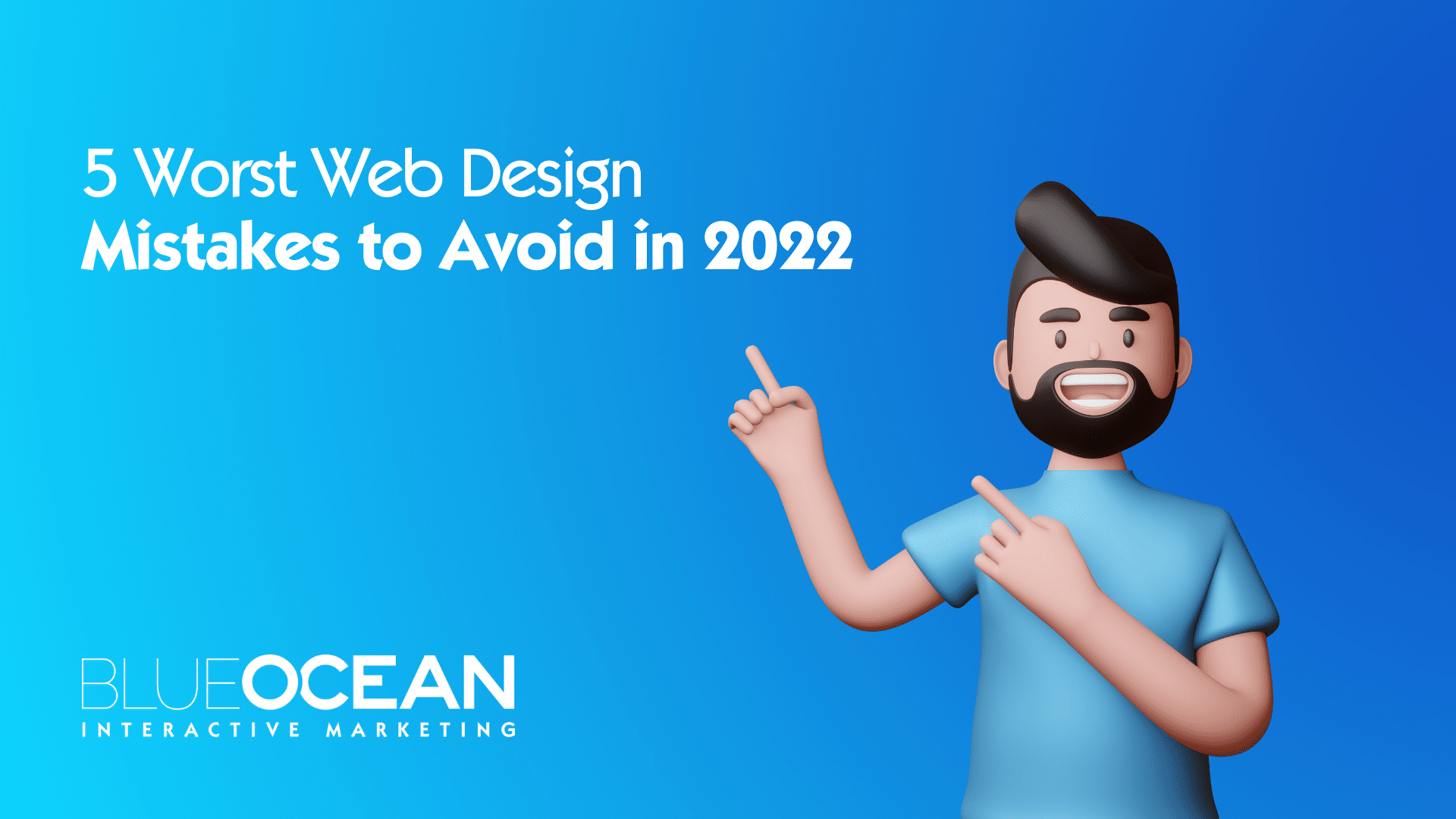
5 Worst Web Design Mistakes to Avoid in 2024
It's been over 20 years since the world fell in love with the World Wide Web, but many websites continue to disappoint users with their dull and uninspiring interfaces. As a result, the internet is littered with websites that fail to impress visitors. Fortunately, creating a great website is not as tough as you think. The fundamental principles of good web design are pretty simple. Unfortunately, there is also a lot of bad web design out there — perhaps because it's so easy to make web design mistakes.
Users are now accustomed to clean layouts that look almost unfinished in their simplicity, sites with obvious user flow and clear call-to-action buttons, images that load quickly and appropriately, and sites that feel responsive and fast regardless of device or connection speed.
Go with responsive design if you want to ensure your site is future-proof. Responsive web design, or RWD, is the process of designing a website so that it responds to the user's device (such as a computer, tablet or mobile phone), which means it automatically re-organizes itself to fit any screen size, including different screen widths and pixel densities. This is particularly useful for one-stop shopping websites where users might access the service on a laptop in the office, then on a phone from home, and then again on a tablet at the train station. Users will expect the same experience on whatever device they are using. The best responsive websites are those that don't look like they've been designed for a specific device. Rather, they look like they were naturally meant for any device, without being overly complicated.
(Check out some of our favourite responsive websites that we've built)
If you want visitors to enjoy their time on your website and come back for seconds, it's important to prioritize user experience (UX). If your website's UX is lacking, you're missing out on potential leads and sales that could put your company on the map! There are many ways to improve UX. For example, you can ensure your site loads quickly by deleting unnecessary images, compressing large files, and optimizing your website code. You can also consider simplifying your website's navigational elements to avoid overwhelming your users.
Regarding your website's design, there are no hard and fast rules. However, you can improve UX by making your website more ergonomic. This means creating an interface that is comfortable and intuitive to use, minimizing any strain on the eyes, as well as avoiding any clicking or tapping that is too difficult. A good rule of thumb is to imagine yourself as one of your website's visitors, making sure the experience feels seamless and comfortable.
If you want your website to stand out, then you need to be careful not to overdo it. Websites are not galleries — they are functional. What will set you apart from the competition is consistency and a clear focus on customer experience. Highlighting certain elements too much — such as images, buttons, and colours — can actually be counterproductive. You want to create a balanced, consistent and mostly white space layout. When it comes to colour, use a palette that feels professional. You can use colour wheel tools such as Colour Lovers to find the most appropriate colours for your site. And remember: less is more.
In addition to improving UX, effective navigational elements can help you increase conversion rates. The most important navigational elements are your website's main navigational menus. Depending on your industry, you might want to consider adding a "Contact us" button. If your site has a lot of information, consider adding a table of contents. If you're designing a website for an e-commerce business, you might want to consider adding a shopping cart icon. Other useful navigational elements include hyperlinks, search bars, and "Top 10" lists. When designing your site's menu, keep the following principles in mind: - Your site's main navigation menu should be at the top of your page, clearly visible to all visitors. -
Your navigation menu should include links to all of your site's most important pages, such as your "About us" page, "Contact us" page, and your "Products/Services" page. - Your page titles should be short yet informative, and they should be consistent throughout the entire site. - Your navigational menu should be consistent throughout every page of your site, regardless of whether the page is published on a website or Facebook.
Great content is what will ultimately drive your visitors to convert. This might seem obvious, but many sites forget this basic principle. If you want to stay ahead of the curve as far as web design is concerned, you need to make your site content-driven. Make your site's content the focus of the user's attention, not your images or design elements. If you have the content, you can build a website around it. If you don't have the content but you want a fancy website, you'll have to rely on user-generated content (UGC) such as user reviews and comments. Unfortunately, good UGC is hard to find. Creating your own content and driving your visitors to it is much easier.
Don't forget to have optimized images and videos! Check out our blog here: When Size Actually Matters - Optimizing Images for Web and Performance
The good news is that the fundamentals of good web design are pretty simple. So, with the design team at Blue Ocean Interactive Marketing, you'll be well on your way to creating a website that drives traffic and assists your business in generating leads and views!